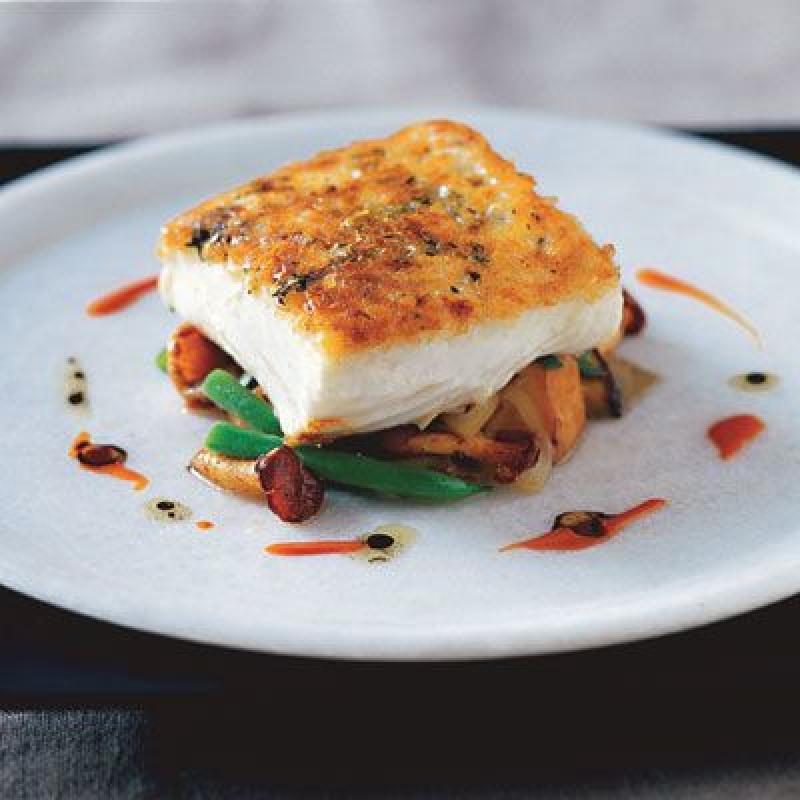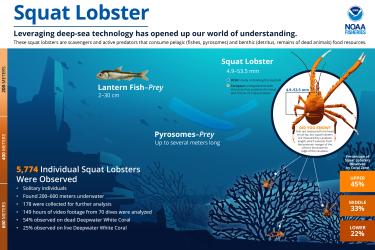U.S. seafood is sustainable, nutritious—and delicious! Many Americans are familiar with only a fraction of the species that come from U.S. fisheries. Beyond staples like tuna, salmon, and cod, there are plenty of other fish in the sea that merit a place on our plates. Because these species are not as familiar to seafood shoppers, they are often overlooked or harder to find at markets. Fisheries, fishing communities, and coastal ecosystems are more resilient when harvesters can diversify the species they target—and then sell the fish they catch. Support U.S. fishermen—and your local economy—by adding more U.S. seafood to your diet!
Some chefs, restaurants, and seafood distributors have resolved to incorporate underused species in their menus and stores. Home cooks can try this, too, especially by shopping for seafood at their local fish market or talking to their grocery store fish counter. These efforts support a sustainable ocean harvest and provide customers with opportunities to savor new fish in new dishes.
The start of a new year is a great time to try new things. In that spirit, we'd like to introduce you to six seafood species you may not have tried. Consider it a New Year's Meet-and-Eat!
Skate
Relatives of sharks and rays, skates glide along the seafloor. Winter skate, the primary seafood species, is common in southern New England and Georges Bank. Trawl and gillnet fishermen catch them incidentally while targeting groundfish or scallops.
Skate Recipes
Skate meat comes from a skate’s large pectoral fins, referred to as “wings.” It is firm and mild, similar in taste to scallops, and suitable for a range of flavors. Try pairing Old Bay-crusted skate wings with remoulade, or curried skate wings with coconut rice and chutney.
- Curried Skate Wings with Sticky Coconut Rice and Tomato-Masala Chutney
- Old Bay-Crusted Skate Wing with Mashed Potatoes and Red Pepper Remoulade
Fun Fact
Even if you’ve never seen a skate, you may be familiar with their eggs. Skates deposit large, leathery eggs onto the seafloor in dense aggregations called “skate nurseries.” But it is not uncommon for skate egg cases to wash ashore and dry out after a storm. Beachcombers know these as “mermaid’s purses.”
Read more about the latest research into skate nurseries in Alaska
Bluefish
Highly migratory bluefish swim nearshore along the East Coast in vast schools. For decades they were a staple of coastal diets. Today, recreational fishing accounts for the great majority of the landings, but they are available seasonally in fish markets.
Bluefish Recipes
Bluefish should be considered an in-season treat, as it doesn’t keep or freeze well. Plan to cook fresh or smoked filets within a day of purchase. Bluefish has a rich, full flavor, which can be a bit bold for some tastes. To tone it down, remove the strongest flavored dark strip of meat from the filets before cooking.
Fun Fact
Bluefish are top predators, with razor-sharp teeth and shearing jaws. When a school of bluefish encounters a school of prey they embark on a feeding frenzy that fishermen term a “bluefish blitz.” They shred anything within reach, causing the ocean to churn like a washing machine.
Petrale Sole
Petrale sole are a species of flounder with a success story in sustainable management. Twenty years ago, petrale sole and other West Coast groundfish stocks collapsed due to overfishing. Following years of cuts, closures, and careful monitoring, most groundfish populations are now rebuilt.
Petrale Sole Recipes
Petrale sole has a sweet, delicate, nutty flavor and a fine flake. It is generally available year-round. For an exciting first date with petrale, try dressing up sauteed filets with gold tomato sauce. Or, spice things up with fried petrale filets with cumin and peppers.
Fun Fact
Like other right-eyed flatfish, as petrale sole develops, its left eye shifts across its face. The fish’s right side becomes its top side, and its left, the underside. Laying flat against the seafloor, the camouflaged adult petrale sole ambush their prey of crustaceans, brittle stars, and small fish.
Triggerfish
Gray triggerfish are reef fish found in the Gulf of Mexico and western Atlantic. Their small mouths contain powerful jaws built for munching crabs, sea urchins, and sand dollars. Both recreational and commercial fishermen catch them with hand lines or electric reels.
Triggerfish Recipes
Triggerfish is sweet, with fatty white flesh that tastes more like crab than fish. Removing the tough skin leaves thin, versatile filets that are best eaten fresh or smoked. Relatively thicker filets are great for grilling, as in this recipe with Mediterranean herbs. If your filets fall apart, flake them for triggerfish cream soup.
Fun Fact
A triggerfish has a series of spines on its back that it can raise or lower in response to environmental cues, such as the presence of predators. The first dorsal spine is large and sharp. Erecting the smaller, second spine “locks'' the larger spine upright until the second spine is relaxed—or depressed, like a trigger. If threatened, the triggerfish can dart into crevices and use its locking spines to anchor itself in place.
Tilefish
Beautifully colored tilefish are another source of seafood that shies away from the limelight—or at least, the sunlight. They prefer to hang out near underwater canyons along the Eastern and Gulf continental shelves. Two species, blueline tilefish and the larger golden tilefish, are fished commercially from Texas to Massachusetts. Longline fisheries in southern New England and the Mid-Atlantic land the majority of the catch.
Tilefish Recipes
Tilefish has a firm texture and mild flavor, similar to lobster or crab meat. It is almost always sold fresh. In 1952, the U.S. Fish and Wildlife Service proclaimed tilefish to be “one of the better food fishes.” Peruse their test kitchen’s suggestions for broiled, boiled, and baked tilefish steaks—even tilefish casserole! Note that these vintage recipes are big on butter. For a lower calorie option, try herb-roasted tilefish instead.
Fun Fact
Tilefish burrow into the mud or sand for safety. Most tilefish dig vertical burrows down into the seafloor, but some build horizontal burrows into the submarine canyon walls. Scientists refer to these horizontal burrows as “pueblo habitats,” after the indigenous pueblo dwellings in the southwestern United States. Four deep-water canyons in the Mid-Atlantic region have been closed to bottom-gear fishing to protect these valuable habitats.
Sablefish
Deepwater dwellers, sablefish are found on muddy sea bottoms eating whatever they can catch. Sablefish are commonly called “black cod” for their physical resemblance to the more famous seafood staple. They are not, however, members of the cod family.
Sablefish Recipes
Sablefish is named for the soft, velvety texture of its filets. It is sometimes marketed as “butterfish” for its melt-in-your-mouth texture. Fortunately, this delicious option freezes well, so it’s available year-round. Washington Sea Grant recommends pan-frying whole fish or filets in a bouquet of Pakistani spices. For an option requiring fewer ingredients, try searing smoked sablefish with a tropical glaze.
Fun Fact
In partnership with the Jamestown S'Klallam Tribe and the University of Washington, scientists at NOAA Fisheries’ Northwest Fisheries Science Center are experimenting with raising farmed sablefish. They hope to lay the groundwork for viable commercial sablefish aquaculture.
Read more about sablefish net pen experiments at NOAA’s Manchester Field Station







